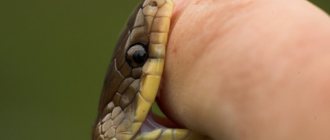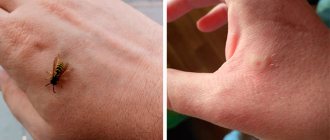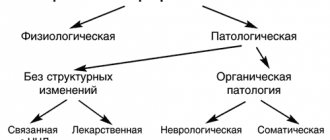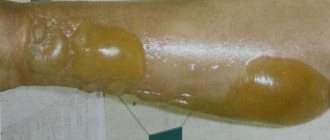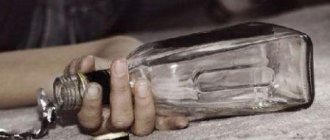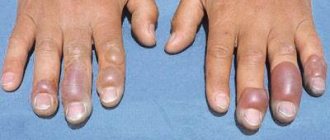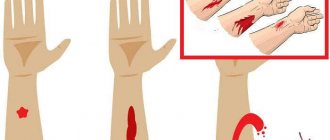Snake venom
Some reptiles of this species have parotid glands that secrete poison. With the help of ducts, they are connected through canals to the two upper teeth. When a snake bites a person, the venom enters the bloodstream and causes severe poisoning, often leading to death. The question arises, what should you do if you are bitten by a snake? Provide first aid immediately. But there is no need to kill snakes, since they are a source of poison necessary for making medicine.
The degree of poisoning from snake venom primarily depends on its dose, concentration and location of penetration. Therefore, the consequences are different. The age of a person and his state of health are of great importance. The most dangerous are bites to the head and torso. If the venom from a bite immediately enters a vessel with blood, a person can die in five to ten minutes. Viper venom, for example, is twice as dangerous when administered intramuscularly than subcutaneously. What should you do if you are bitten by a snake? Urgently, without wasting a minute, provide first aid. How to do this, read the article.
Prevention
Basic preventive measures include rules of behavior in places where snakes may live. The following precautions when meeting an animal can also save a person’s life:
When walking in the forest, wear high boots and thick clothing.
- If a snake is dangerously close, you should not move sharply or swing your arms or legs. This will provoke a throw.
- When hiking, tall grass is parted with a stick in order to detect dangerous animals in time. It is advisable to wear high boots and thick clothing when walking in the forest.
- Before visiting places remote from the city, be sure to put an antidote in your first aid kit.
When can a snake bite?
For example, a viper. The snake does not take active steps to attack. This happens when a person steps on it, tries to touch it with their hands, or accidentally falls into its nest. In this case, there is a justification for her attack: she is defending her territory. To avoid being bitten by a viper, you need to be extremely careful in its habitat.
The snake is deaf, but it perfectly senses the slightest vibration of the ground on which a person walks. She won't come closer, she'll just crawl away. The greatest chance of meeting a viper is during mushroom season. To prevent this from happening, you need to take any stick and tap it on the ground in front of you.
Symptoms of poisoning
- Bite marks are noticeable - two wounds with a triangular shape.
- There is pain and a burning sensation.
- Redness of the tissues around the bite.
- Swelling that spreads quickly.
- Hemorrhages.
- Weakness throughout the body.
- My head is spinning.
- Pallor of the skin, nausea and vomiting of blood appear.
- Body temperature rises to forty degrees.
Clinical manifestations
The highest quality medical care is provided in cases where the patient or others have managed to notice what type of reptile has caused dangerous damage. This will allow you to outline a further treatment program with increased chances of success.
But even despite the fact that there are quite a lot of dangerous scaly representatives on the territory of the post-Soviet countries, they have a number of common signs of defeat. This is explained by the fact that the components of snake venom almost always contain components similar in their spectrum of action.
In short, neurotoxins become the basic elements of aggressive environments towards the victim’s tissue. Their main task is a destructive effect on nerve structures.
The second component is called hemolysin. Its distinctive feature is the provocation of the breakdown of healthy red blood cells and other blood cells. Cardiotoxin completes the depressing picture. As the name implies, it negatively affects the functioning of the heart muscle and the cardiovascular system as a whole.
Cholinesterase is no less dangerous. This is the name for an enzyme that is designed to destabilize natural neuromuscular transmission.
But sometimes the standard set can be supplemented with some specific components, which is more suitable for rare exotic species that are found in the jungle.
Looking at the main symptoms of anxiety, they can be sorted into four broad categories, including:
- local manifestations;
- general manifestations;
- cardiac disorders;
- neurological disorders.
The first point covers signs that are relatively easy to detect during the initial examination of the patient and questioning regarding his current condition. At the site of the suspected lesion, two triangular-shaped teeth marks will be visible, located at the same level in relation to each other. The distance between the wounds is from 2 to 3 mm, depending on the specific type of reptile.
Unlike ticks, snakes almost never release an anesthetic enzyme when venom is directly injected. This means that the person will instantly experience intense burning and soreness at the site of the bite.
Next, the following will increasingly manifest themselves:
- redness and then bluishness of the skin at the site of the bite;
- pronounced swelling;
- dark spots, sometimes accompanied by blisters;
- bleeding from the bite site.
At the same time, problems begin with the functioning of the cardiovascular system. If at this moment you take measurements of the heartbeat, then everything will indicate classic tachycardia with a number of beats under 120 units.
Additionally, the victim will face the consequences of a sharp drop in blood pressure, rapid breathing and pain in the chest area. All of the above is especially dangerous if the injury was caused to a child.
Neurological disorders include:
- muscle weakness;
- headache;
- clouding of mind;
- reduced visual acuity;
- double vision;
- inability to focus;
- inability to swallow something normally;
- paralysis of facial muscles and facial asymmetry;
- drooping eyelids.
The general neurological disorder ends with numbness of the entire body.
Against the backdrop of all of the above, hemorrhages and a rapid increase in temperature become standard reactions of the body. If you don’t know what to do from the very beginning, then within the first half hour the victim will experience bloody vomiting and diarrhea. The clinical picture will be complemented by progressive hepatic-renal failure.
Signs of severe poisoning
In severe poisoning, hemorrhages spread in spots beyond the bite site. The affected area of the body becomes purple-bluish in color, and the skin becomes covered with blisters filled with bloody, cloudy fluid. Often the victim’s condition is complicated by the occurrence of venous thrombosis and lymphadenitis. This can occur 8-36 hours after a snake bite, when the poison penetrates the human body. In this case, there is a strong increase in the volume of the affected area. The wounds bleed for a long time, and later ulcers and necrosis form. What to do if you are bitten by a poisonous snake to avoid negative consequences? First of all, it is correct to provide assistance and urgently take the victim to the hospital.
Administration of antidote
Administration of antidote
When snake venom enters the cavity of the human body, to alleviate the patient’s condition and prevent the formation of complications, it is necessary to administer an antidote. Please note that such administration is considered justified if it occurs within the first 24 hours after the bite. If necessary, the administration of the antidote can be repeated.
In a situation where a person has been bitten by a reptile of the viper family, in the first few hours after this, he needs to be administered a serum, which is called “Antigyurza”. It is this drug that helps prevent the development of a severe allergic reaction in the form of anaphylactic shock.
The medication is administered subcutaneously into the subscapular area, and the following scheme must be followed:
- the first time 0.1 ml is administered. drug;
- in 15 minutes additionally 0.25 ml.
This is almost all the basic information about how first aid is provided for snake bites. Following these recommendations will help alleviate the condition of the bitten person, and in some cases even save his life.
What to do if you are bitten by a snake
- First aid to the victim should be provided by a person who knows how to do it. Wrong actions can cause harm.
- It is extremely rare, but it happens that a snake, for example a viper, grabs tightly and does not want to let go. It must be torn from the skin by force.
- What should you do if you are bitten by a snake? Before the wound begins to heal, you can suck out the poison. Only a person should not have any wounds in his mouth, otherwise he himself will be poisoned.
- What to do if you are bitten by a snake? First aid is provided in order to prevent the spread of poison throughout the body, so the victim needs to be kept at rest and not moved from place to place.
- Apply a compressive bandage to the bite site, but do not apply a tourniquet above or below it.
- What to do if you are bitten by a snake if it is on your arm or leg? First of all, it is necessary to remove everything that is worn on the limbs. The poison always causes significant swelling; all jewelry and hygiene items will interfere with blood circulation, which can lead to gangrene.
- What should you do if you are bitten by a snake? If you have it on hand, take an allergy pill.
- To quickly remove the poison from the body, the victim must be provided with plenty of fluids. You should drink at least three liters of water or some sweetened tea. You need to drink the liquid in small sips.
How to avoid a viper bite
Unfortunately, there is no anti-snake vaccine. However, viper bite prevention helps to significantly reduce the frequency of accidents.
Thus, construction waste should not be stored on your personal garden plot. Rotten boards and pieces of roofing felt are an ideal hiding place for snakes, lizards and rodents. The grass growing around the site must be mowed regularly.
- You need to dress accordingly. These should be trousers and high rubber boots, and not shorts and sandals. You need to look carefully at your feet. When checking dry grass for mushrooms or berries, first use a stick.
- When settling down for the night, you need to carefully inspect the area where the tent is being set up. There should be no holes or earthen crevices on it. You need to try to make more noise and stomp, because snakes crawl out of such troubled places. It is better to have a modern tent that is tightly zipped on all sides. This will prevent snakes from entering your temporary home.
And also, before going into the forest, you need to pack a first aid kit for the trip. It should contain the following medicines for viper bites:
- disinfectants - alcohol, brilliant green, iodine;
- a set of sterile dressings, bandage;
- medications - ascorbic acid, Prednisolone or Dexamethasone, Suprastin or Tavegil, Veroshpiron or Furosemide.
Following the rules of being in nature will help protect yourself from a viper bite.
The severity of intoxication also depends on the location of the bite. When going outdoors, you need to remember about the possibility of encountering a viper, so you need to dress accordingly, have modern equipment and a first aid kit with medicines. The main measures for providing first aid after a viper bite are treating the wound with an alcohol solution, immobilizing the injured limb and transporting to the hospital.
Common viper bite - how to avoid, first aid
What not to do
- The most dangerous and common mistake when providing first aid to a victim is the use of a tourniquet, which is applied to an arm or leg. This will not help the spread of the poison, since it is more aggressive and will still penetrate the body. But the bitten area will suffer. The fact is that the poison provokes a process such as tissue necrosis. If a snake bites your leg or arm, the tourniquet can lead to gangrene.
- It is unacceptable to cut the wound; it can cause infection.
- You cannot cauterize the bite site. This will not help, since the viper injects its poison deeply. Cauterization only further injures the bite site.
- Do not drink alcohol, it speeds up the effect of the poison.
- Don't waste your time chasing a snake.
What should you do if you are bitten by a snake? The main thing is to remain calm. Panic will not lead to anything good. If a person becomes confused and fear settles in him, he may waste time. You should know that a viper bite is very rarely fatal, even if the victim did not seek medical help.
Contact with a jellyfish
The stinging (stinging) cells of some jellyfish can cause skin lesions similar to nettle burns. Most often, burns are observed resulting from contact with a jellyfish of the Cornerot species, which lives in the Azov and Black Seas.
Symptoms:
- When poison gets on the face and especially in the eyes (which often happens when diving), a burning sensation, lacrimation, severe inflammation of the cornea, swelling, photophobia, and a sharp decrease in vision for several days occur.
- With a general allergic reaction, difficulty breathing, pain in muscles and joints, cough, runny nose, lacrimation and conjunctivitis, convulsions, and loss of consciousness are possible.
Algorithm of actions:
- Wash your skin with sea (not fresh!) water.
- If there are tentacles, mucus or burning cells left on the skin, remove them with tweezers or wearing gloves.
- If poison gets into your eyes, rinse them with running water.
- If the burn site is very painful, give your child a pain reliever.
- Apply antiallergic ointment.
This is interesting
- In nature, there are two thousand six hundred species of different snakes. In most cases, they hunt for a moving object. The exception is those snakes that feed on carrion. For example, the snake is ovivorous.
- When they detect danger, spitting species fall on their backs with their mouths open, pretending to be dead. At the same time, they give off a foul odor. This is a kind of protection from attacks by predators. They do not like carrion with a bad smell.
- On the head of the viper, boa constrictor and python there is an organ that instantly reacts to any temperature changes, thanks to which snakes hunt well at night.
- The black mamba is considered the fastest snake, its movement speed is sixteen kilometers per hour. The coloring does not match the first word of the name. This snake is gray, green or brown in color. It doesn't come black.
- The longest snake on the planet is the Fluffy Python, a resident of the Ohio Zoo. Its length is seven meters thirty-one centimeters. This is a representative of the Guinness Book of Records.
- You've probably heard more than once that in Mexico there is a herbivorous snake, whose body is covered with thick hair. Rumor has it that she has long been a pet; children love to play with her. We may disappoint you, but such a snake does not exist; in fact, the herbivorous hairy reptiles are a myth.
Treatment at home after a snake bite
Read it, don’t be lazy, please! I wonder what is the purpose of throwing this out on the Internet? Have fun?
They also say that in females the poison is not so harmful, which makes it easier to treat at home. How is that? A snake bites, say, a finger, and you rather, excuse me, look under its tail?! This will be the starting point when choosing ant herbs.
And what a simply stunning, pain-relieving effect that grated garlic and salt has! Mmm! Just apply it on teeth marks, just an ordinary viper! And also, apparently, instead of water, you should immediately drink garlic with wine.
I have no words - only emotions!
Healers are closed people who live in certain conditions and eat in their own way.
Physical and, importantly, mental health is different from us, the “children” of civilization. They will not spread their knowledge so as not to harm anyone
So don't get carried away with such recipes.
